Mazda SkyActiv Prototype Review [Video]

Driving a million dollar car is a rare experience. Rarer still is when the vehicle in question is covered in riveted sheets of metal, the gauge cluster doesn’t work and the dash is held together by duct tape. And to make the whole situation even more strange, the steering wheel is on the right side of the car.
FAST FACTS
1. The 2012 Mazda3 will be the first production model to receive a SkyActiv engine, with a 2.0L 4-cylinder making just over 160-hp and roughly 155 lb-ft of torque.
2. Mazda’s diesel engine makes 165-hp and 340 lb-ft of torque and will be offered in North America in the near future.
3. The SkyActiv-D diesel engine has the lowest compression of any diesel on the market, revs higher than any other (5200 rpm) and doesn’t require an expensive emissions after-treatment system.
4. The first full SkyActiv model will be the CX-5 crossover, with not only a new engine and transmission but Mazda’s all-new platform.
5. Mazda claims its 6-speed automatic is faster than a dual-clutch transmission.
No, this isn’t an antique European sports car, but rather one of very few prototypes built by Mazda to showcase the brand’s new SkyActiv technologies. It may look like a beat-up Mazda6 sedan, but it shares little (very little) with that car, sitting on an entirely new platform and using the latest engine and transmission technologies.
A part of a SkyActiv technology workshop being held in Vancouver, Canada two of the cars are even equipped with Mazda’s new diesel engine, which the company says will go on sale in North America in the coming years – but more on that later.
FLEXIBLE PLATFORM, IMPROVED RIDE QUALITY AND DRIVING DYNAMICS
While Mazda’s new SkyActiv-G gasoline engine will first make an appearance in the 2012 Mazda3, the new body structure will arrive a year later, not as a new Mazda6, but rather as the CX-5 compact crossover. A flexible platform, Mazda has poured its resources into this new “frame” that can be shared among numerous models.
The new platform is inherently stiffer and stronger, thanks to an increased use of high strength steel and by nature of its geometry. Mazda claims a 30 percent improvement in rigidity and an 8 percent reduction in weight, and promises to achieve top marks in crash testing.
Get the Flash Player to see this player.
Attached to the body is a new suspension design (in the rear in particular), with numerous advantages. Mazda claims the new suspension geometry makes for improved rear tire grip and high-speed stability, while a new rear trailing arm design also helps deflect bumps in the road away from the car, rather than forcing the car to absorb them. Driving the spread of prototypes on the roads outside Vancouver we’d be lying to say there was a noticeable improvement in the former, although we did note the improved ride quality and comfort. In part, the more efficient suspension design allows for softer damper settings.
While short on some details like actual horsepower ratings for the new engines, Mazda’s presentation was incredibly specific in other areas, even highlighting how moving the rear trailing arm by almost two inches makes for significantly less dive under braking and, therefore, an improved stopping distance. To get a proper idea of just how much of an advantage results from this, however, a proper braking test would be needed.
Along with these benefits from the SkyActiv Body and Chassis is a tighter steering ratio, dropping from 15.4 to 14.5. This is perhaps the single most noticeable improvement to the driving experience and helps improve what Mazda calls the “Jinba ittai” (the feeling of oneness between car and driver).
In addition to the 8 percent reduction in body weight, Mazda claims its new chassis components are 14 percent lighter, benefitting not only fuel economy, but also driving performance.
NEW 2.0L MAKES POWER LIKE A 2.5L, GETS FUEL ECONOMY LIKE A DIESEL
The real performance factor, however, lies under the hood, with two new engines, including the brand’s first ever diesel for the North American market, which uses some innovative solutions to deliver the best diesel driving experience short of the BMW 335d.
The SkyActiv-G gasoline engine is a 2.0-liter 4-cylinder that will make just over 160-hp, while delivering a 15 percent improvement in torque compared to the current 2.0-liter, which should put it in the range of 155 lb-ft. Essentially this new engine will replace the current 2.5-liter while continuing to offer similar power on paper.
Off the sheet and into the real world, however, and it feels even better than the current 2.5 – which we drove at the start of the program to set a baseline. This is likely due to the combined weight reduction, improving the car’s power to weight ratio, despite a slightly lower output number. A quicker shifting transmission also helps and when equipped with a manual box the new engine, platform and chassis combine to make for an enjoyable driving experience – a significant change from the current 6.
Add to the performance improvements a 15 percent increase in fuel economy, delivering numbers Mazda claims are on par with its current diesel engine sold in Europe.
If you’re not feeling geeky today, skip to the next paragraph, but for those who are, here’s how Mazda has achieved such an impressive result. For starters, the engine uses direct-injection and variable sequential valve timing, plus lighter components that result in a 10 percent weight reduction with 30 percent less friction. To achieve maximum power the engine gets a 14:1 compression ratio, the highest of any gasoline powerplant on the market – although North American versions will make use of a 13:1 compression ratio allowing them to run on regular 87 octane fuel. Normally such a high compression ratio would result in knocking, but Mazda has solved this though the use of a rather complex looking 4-2-1 exhaust manifold with longer runners that help reduce residual gas in the cylinders and, therefore, drop temperatures when required. And to ensure ideal combustion, multi-holed injectors combined with a new piston design and a smaller 83.5 bore make for minimized cooling loss on combustion. In short, the cylinders are hotter when they should be and cooler when they should be.
REVOLUTIONARY NEW DIESEL: LOW COMPRESSION, HIGH REVS, 340 LB-FT
As good as the gasoline engine is, it will be a tough sell when Mazda offers its new SkyActiv-D diesel engine, with an impressive 20 percent improvement in fuel economy over the current 2.2-liter diesel offered in Europe and some almost unbelievable power figures. The 165-hp at 4500 rpm isn’t hard to swallow, but Mazda is also claiming a torque figure that could hit 340 lb-ft at just 2000 rpm.
Mazda arranged for us to first drive one of the Euro-spec diesels and then hop into two new SkyActiv-D mules, one with an automatic and the other a shift-it-with-your-left-hand manual.
Yes there’s more power, but the real difference is the way the new SkyActiv version drives, feeling like a typical diesel at lower rpm, but with more revs and a torque curve that doesn’t fall on its face at 3000 rpm. Mazda put considerable effort into improving torque higher up in the rev range and it has paid off, with the engine feeling more like a powerful gasoline mill up top. And with max rpm at 5200 rpm, well above the 4500 rpm of any diesel rivals, it delivers some of Mazda’s fun to drive spirit to the diesel world.
Incredibly, Mazda achieves all this while still meeting strict North American emissions standards for diesels and without using expensive and annoying NOx after-treatment systems.
Like Mazda’s new SkyActiv-G engine, the SkyActiv-D departs from conventional thinking and whereas the gas engine offers the highest compression ratio on the market, the diesel breaks new ground, with its power and economy the result of the lowest compression ratio of any diesel currently available.
The 14:1 compression ratio makes for significantly reduced temperatures inside the combustion chamber, allowing for an earlier injection of fuel through more efficient piezo injectors. This longer period of mixture with the air makes for a more thorough combustion with fewer emissions. This system is then combined with a two-stage turbo to maximize power and variable valve lift on the exhaust valves to help prevent misfiring. Plus, yet another benefit is that the reduced compression allows for the use of lighter components, shedding 10 percent from the block, crank and con rods.
Despite all these improvements it still sounds like a tractor, something that certainly isn’t going to help popularize an engine technology that already has a negative view by the buying public. To be fair, this was a prototype and no sound deadening efforts were made, but we’ll be surprised if when fitted in a production car the new SkyActiv-D sounds any less like a truck than a Jetta TDI.
QUICKER SHIFTING TRANSMISSIONS
Taking a holistic approach to vehicle development Mazda even went so far as to engineer a new line of transmissions to get the most out of the SkyActiv-G and D engines.
As a continued nod to enthusiasts improvements were made to the 6-speed manual, with a shift stroke that’s been cut from 2-inches to 1.8-inches while also promising less effort. Unfortunately the stick-shift equipped models were all right hand drive and being far from familiar we’ll have to wait for a production model to truly evaluate, although we don’t doubt Mazda’s claims – including the fact that this new stick-shift has the shortest throws of any passenger car on the market.
Being a smaller automaker with limited resources Mazda simply isn’t able to offer multiple transmission solutions depending on the model. So much like how it’s designed a new platform that can be used for numerous vehicles, a new SkyActiv-Drive automatic transmission has been created bring together what Mazda says are the best features of a dual-clutch transmission, a CVT and an automatic.
In fact, Mazda even claims shift times that are faster than a traditional dual-clutch setup –which is hard to believe, even after driving the car. To be specific, Mazda claims that downshifts on the SkyActiv-Drive transmission are quicker, and even then that’s only an average, with dual-clutch setups providing a more immediate gear change depending on what gear is being swapped and what speed the car is moving.
Without paddle shifters on the prototype (Mazda hasn’t said if they’ll offer shifters on production models) some of the passion is lost, although it wouldn’t be a stretch to say this is one of the best automatic transmissions we’ve ever driven, up there with BMW and Infiniti.
And the advantages aren’t just limited to performance, with Mazda also claiming a 4-7 percent improvement in fuel consumption, as well as being both lighter and more compact.
THE VERDICT
Mazda’s future has been in doubt ever since its split from Ford, with many calling for this medium- to small-sized automaker to find a major partner again. Mazda, however, has crafted a plan to survive, relying on flexible platforms and multi-purpose engines and transmissions to create a roadmap for success.
True, there’s no plan for 2050, with a total absence of anything to do with hybrids or electric cars. Instead, Mazda is making the very wise bet that the internal combustion engine will be the predominant technology for the next decade, and has built the products to survive and even succeed in that time.
In particular, Mazda’s new diesel engine impresses, with plenty of power and what the automaker plans to eventually reveal as shockingly good fuel economy. And with a driving feel that maintains that Zoom-Zoom spirit, Mazda might finally have a diesel that can win the hearts of drivers across North America.
RELATED READING

With AutoGuide from its launch, Colum previously acted as Editor-in-Chief of Modified Luxury & Exotics magazine where he became a certifiable car snob driving supercars like the Koenigsegg CCX and racing down the autobahn in anything over 500 hp. He has won numerous automotive journalism awards including the Best Video Journalism Award in 2014 and 2015 from the Automotive Journalists Association of Canada (AJAC). Colum founded Geared Content Studios, VerticalScope's in-house branded content division and works to find ways to integrate brands organically into content.
More by Colum Wood


















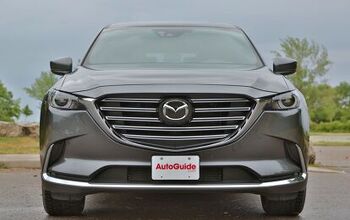
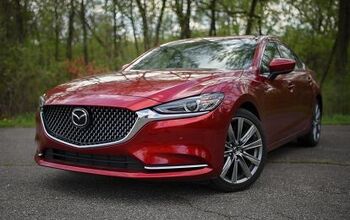

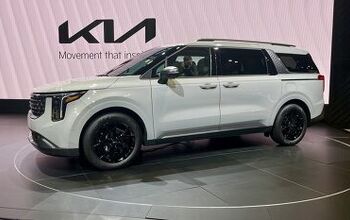


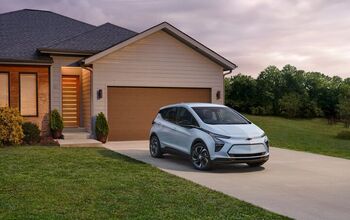

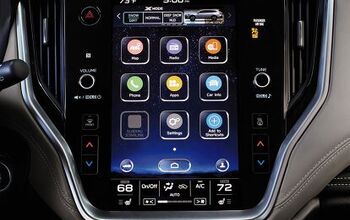

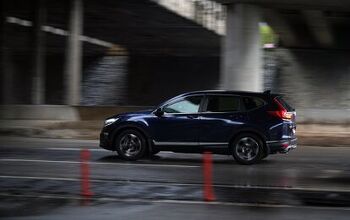


Comments
Join the conversation